05.3.2024
Top 5 IT Certifications Shaping 2024: Stay Ahead in Tech

Posted by Marbenz Antonio on May 31, 2023

Now, the demand for an Agile product with Certification in Agile Methodology owner is greater than ever before.
An increasing number of organizations are recognizing the advantages of employing an agile methodology. According to Digital.ai’s 15th State of Agile Report, there was a significant 49% surge in Agile adoption within software teams between 2020 and 2021.
According to the same report, it is highlighted that approximately two-thirds of Agile organizations have observed substantial advantages by embracing Agile methodologies. These benefits encompass efficient priority management, enhanced visibility, and improved alignment between business and software teams.
As Agile continues to gain prominence as a crucial determinant of business success, recruiters are in search of top-notch talent capable of transforming a company’s product objectives into tangible outcomes.
The Agile process relies on several key individuals, and the product owner is undeniably one of the most vital contributors in this context.
Want to know more about Agile? Visit our course now.
The role of an Agile product owner entails the responsibility of maximizing the value derived from the products developed by an Agile development team. These individuals are cross-functional experts who collaborate with various departments and teams, including members of the product team, senior management, product users, and other stakeholders.
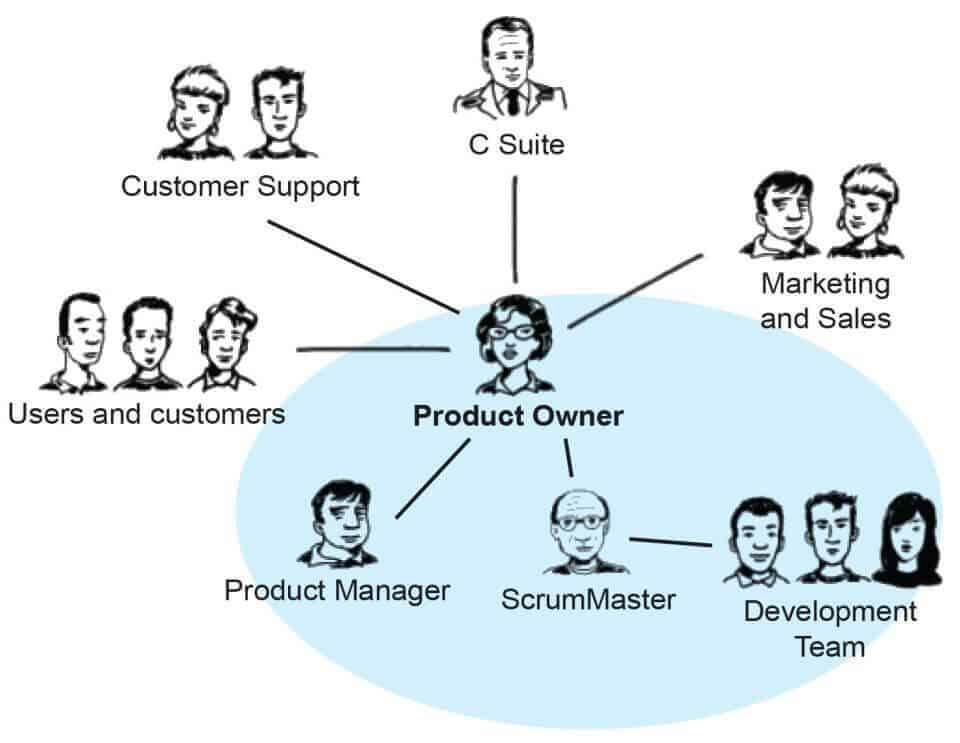
Agile product owners engage with different stakeholders, gathering feedback, processing it, and subsequently prioritizing it for the development team.
Due to their crucial responsibilities, Agile product owners occupy a central role in the product development process. Beyond being cross-functional experts, they assume various roles depending on the situation. Sometimes, they take ownership of the entire product backlog, while in other cases, they manage the backlog for specific product features.
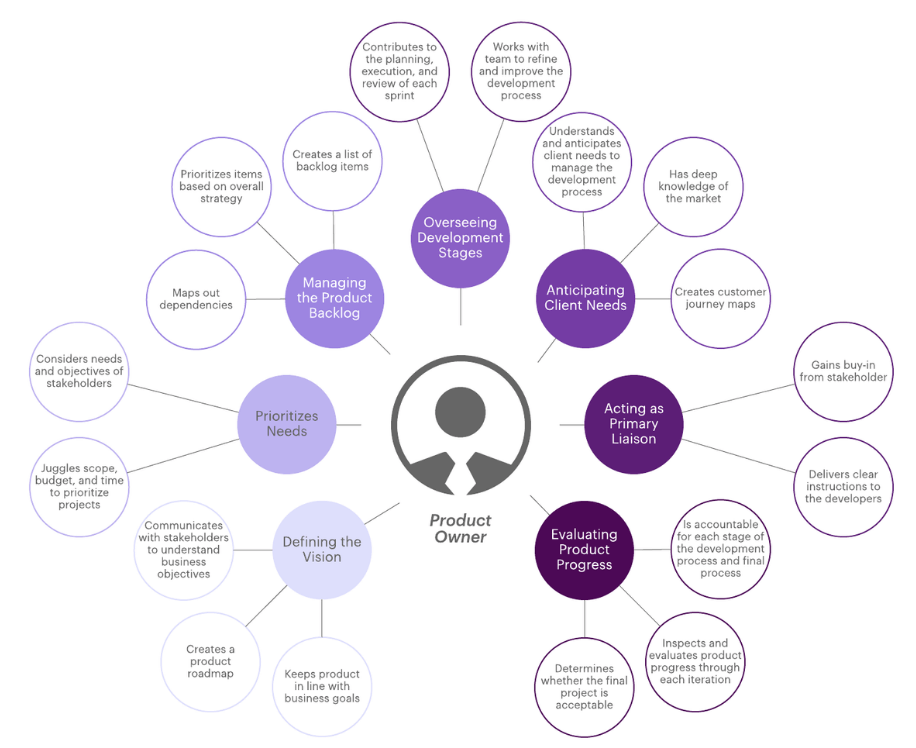
To gain a more detailed understanding of the daily tasks performed by Agile product owners, let’s delve deeper into four key areas of their responsibilities.
Prior to exploring those duties, it’s crucial to clarify that Agile product owners and Scrum product owners are synonymous. This can often be a source of confusion for both recruiters and founders.
Scrum is a subset of the Agile framework, providing a lightweight structure for generating product value. This framework follows a four-step process:
The definition of the product owner, as outlined in the Scrum Guide, is as follows:
“The product owner is responsible for maximizing the value of the product resulting from the work of the scrum team.”
In this case, the product owner is referred to as a Scrum product owner. Similar to an Agile product owner, they have full ownership of the product, and their roles and responsibilities remain unchanged, regardless of whether an organization adopts the Agile methodology or a variation like Scrum.
Now, let’s shift our focus back to discussing the responsibilities of an Agile product owner. To start, we will explore the duties related to product goals.
A fundamental task for an Agile product owner is to comprehend the vision and objectives of a product.
One of the key responsibilities of an Agile product owner is to grasp the vision and goals of a product.
Having well-defined goals ensures that team members possess a unified understanding of their expectations. The Agile product development team may occasionally deviate from its primary objective due to the adaptable nature of the approach. Given the rapid pace of the development process, it becomes essential to maintain a clear understanding of the areas on which the product team should concentrate their efforts.
As a result, an Agile product owner must have a thorough awareness of both the product vision and its associated goals. The product manager often defines both the product vision and its objectives.
As the Agile product owner, your task is to internalize the product vision and the goals established by the product manager. This is vital as it sets the groundwork for your approach to product backlog grooming.
Without a clear understanding of the overall strategy and goals of a particular product, you may encounter difficulties in prioritizing and effectively communicating tasks. Insufficient comprehension of these aspects can impede the product team’s progress in achieving its objectives and potentially jeopardize the success of the product.
A major focus of the product owner’s responsibilities revolves around the management of the product backlog.
As defined in the Scrum Guide, the product backlog is an ordered list of tasks that the team must complete to achieve a specific product goal. Each task within the backlog represents a standalone iteration performed by the Agile team.
Throughout the lifecycle of the product backlog, the product owner plays a significant role in its creation and evolution. Initially, they engage in refining the product backlog, a process commonly referred to as backlog grooming. During this stage, the product owner carefully assesses the tasks within the backlog and reorganizes them based on factors such as urgency, priority, or logistical considerations.
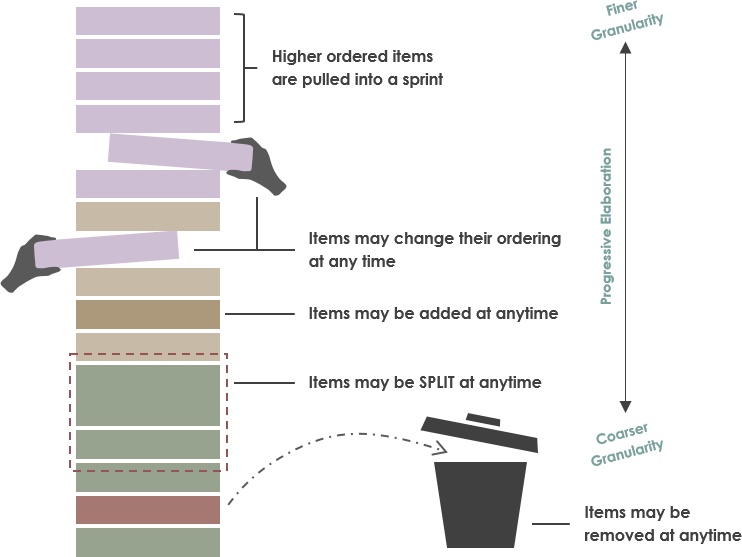
In addition, an Agile product owner may make adjustments to tasks or provide additional descriptions or details to existing ones.
During this process, the product owner must groom the backlog in a manner that effectively communicates the requirements and descriptions in a clear and concise manner.
Scurm.org provides a visual representation illustrating how product owners should organize their product backlogs based on sprints.
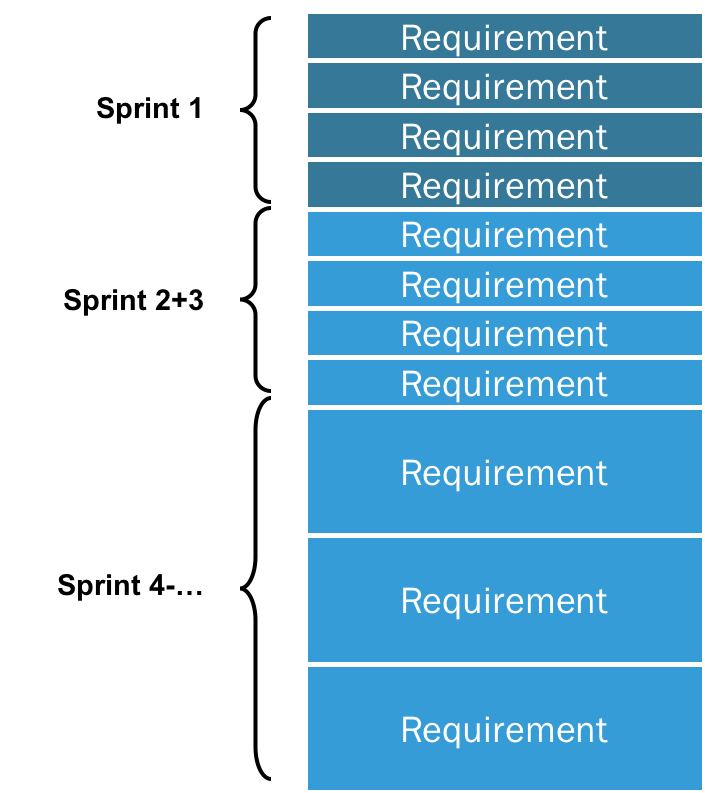
The items that are prepared for the upcoming Sprint, refer to a single iteration within the Scrum and Agile development cycle. Each Sprint has a predetermined duration that is repeated in a cyclical manner.
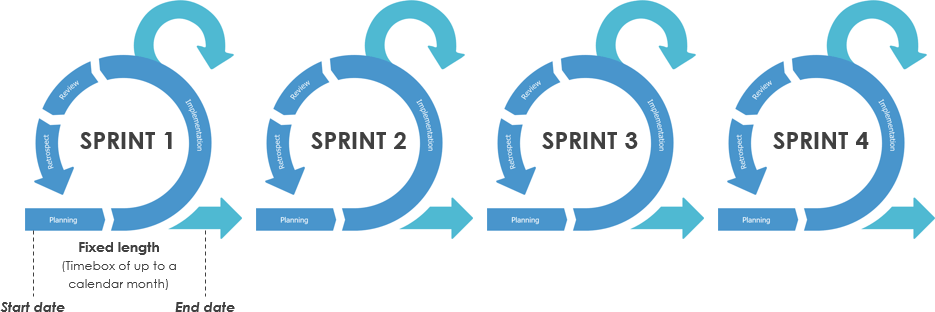
The sprint’s fixed duration guarantees predictability in development and enables the product owner to have a clear understanding of when the product will be available. The effectiveness of the product owner directly influences the efficiency of the development team.
While fulfilling their role, the product owner must prioritize practicing transparency. This involves making the processes and works visible to all stakeholders, including the team members handling the tasks in the product backlog, as well as the clients, customers, or end-users who will receive the final product.
To maintain transparency, the product owner should engage in the following practices:
Here is a template for evaluating transparency, which aids Agile product owners in assessing the extent of transparency they demonstrate.
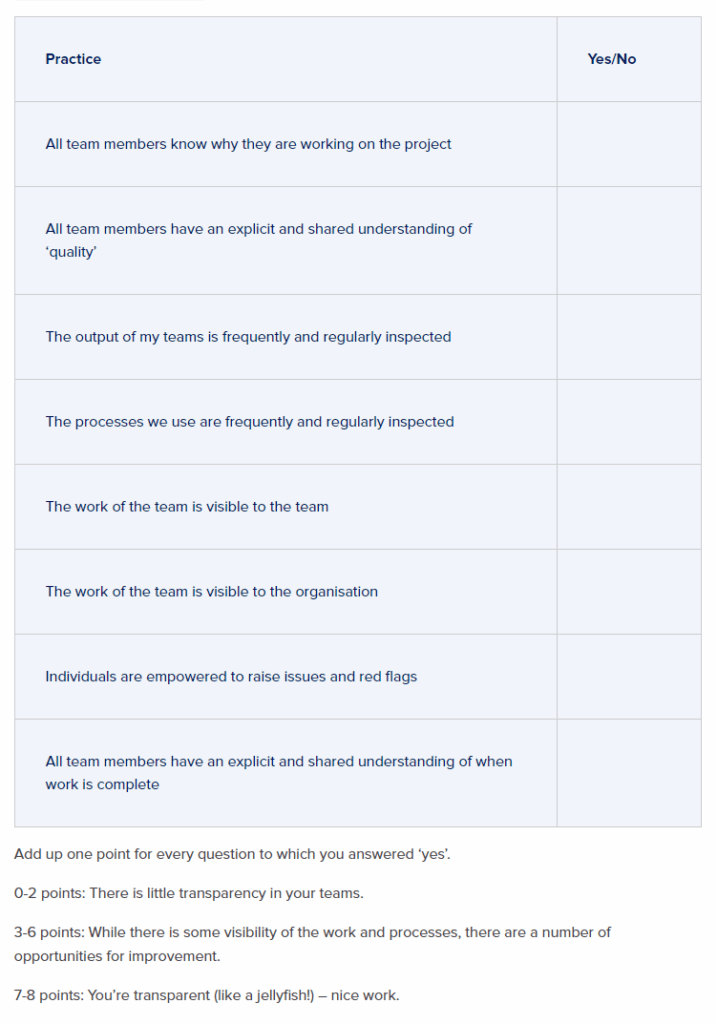
The Agile product owner with Certification in Agile Methodology is responsible for anticipating the factors that will impact both the product’s creation and the development team’s ability to achieve their objectives.
Relying solely on the initial project scope is inadequate for the product owner to effectively prioritize tasks. Various internal and external factors influence how the product team should approach product design and development. Therefore, it is essential for astute Agile product owners to maintain ongoing communication with all stakeholders.
By actively seeking feedback from stakeholders, the product owner can modify the product backlog accordingly to align with the short-term and long-term requirements of the product.
Agile product owners share similar responsibilities to traditional product owners, as both are accountable for managing and refining the product backlog.
Given the significance of their role in the success of the product team, Agile product owners must strive for excellence.
To thrive as an Agile product owner, one must possess a continuous learning mindset and be committed to expanding their skill set.
Being proactive, adaptable, and dedicated to maximizing product value are essential attributes for a successful Agile product owner.
Here at CourseMonster, we know how hard it may be to find the right time and funds for training. We provide effective training programs that enable you to select the training option that best meets the demands of your company.
For more information, please get in touch with one of our course advisers today or contact us at training@coursemonster.com
